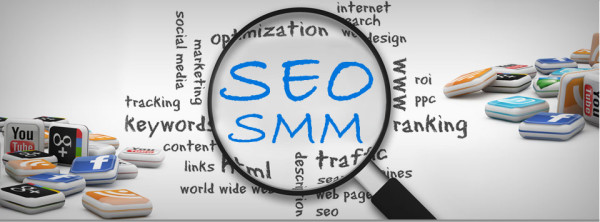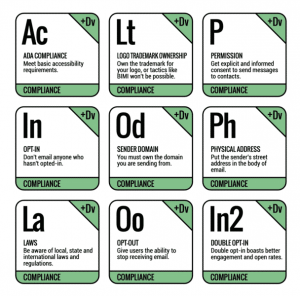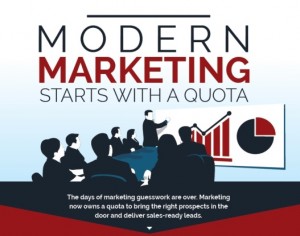
Over the past decade, search engines like Google have been taking the lead as the top places to market your products or services online. If you are looking to grow your business, you should be growing your online presence on the search engines. Search Engine Optimization (SEO) and Social Media Marketing (SMM) represent an intelligent and relatively cost-effective way to build influence and drive in leads and engagement.
According to a report by Shareaholic, last year Social Media have driven 31.4% of the overall referral traffic to websites. (Referral Traffic is Google’s method of reporting visits that came to your site from sources outside of its search engine). This means that you should take advantage of being active on the biggest social media platforms: you will have the chance to promote your business and get your name out to a huge audience. Also, that your business is not unique are quite high: why should people choose you over your competitors? In an age of extremely competitive markets, it is absolutely vital that your business be easily accessible for all potential clients. Social media allow you to gain an outside look at your competitors’ strategies.
Once you have set up your social media profiles, it is important to know what to do in order to garner traffic. The most important thing you have to focus on, is to produce interesting, shareable and SEO optimized content. While trustworthy and engaging content is just one of the factors influencing your rankings, it is also the most important: lacking it means that your website will not be indexed by Google and ultimately no one will be able to read you. When writing SEO optimized content, you will have to take into consideration several factors. For instance, you should choose your keywords carefully and make sure they appear in your title, in your page’s URL, in the body of your article and in the page’s meta description.
Furthermore, if you run your company’s online presence, you are basically Google’s customer. Google’s algorithms change regularly in order to improve user experience and control the manipulation of search engine indexes. It is extremely important that you understand the way in which search results work to improve your pages’ SEO rankings and ultimately your visibility and revenue.
There are more than 200 criteria influencing your online visibility. Ideally, you should make sure that each and every one of your choices meets them, but at least at the beginning, you should make sure that you keep your website updated, relevant, trustworthy and easily accessible to all users.
Other than posting original content, you can build influence by sharing engaging and relevant posts by the major influencers in your industry. All your links and contents should point to authoritative and reliable websites. This will attest to your knowledge of your business and will build customer trust, making your website ‘a link-worthy site’. You will also have to make sure you use the right keywords for your content to be easily searchable.
Now you have a great SEO friendly content and you want to share it on the social media profiles you’ve created. Who do you want to reach? What do you want to tell them? How can you get your message across? In simple words, you have to choose the right audience. All the major social networks for business, such as Facebook, Twitter, Google+ and LinkedIn, allow you to find out data about your users’ demographics, the reach of your posts, the trending topics in your industry and the actual effectiveness of your efforts. In addition, there are a number of free social media analytic tools you can use to narrow your target even further.
Understanding your audience is a key step to plan your marketing strategy. Don’t attempt to reach everyone: it is more likely for your business to be successful if you do your market research. Also, don’t forget that each social media has its own peculiarities. Running your company’s presence on several platforms entails adjusting your content and approach not only to the audience’s demographic but also to each social network’s peculiar functions.
Last but not least: be original! It is absolutely necessary that you promote your small business with creativity to beat the competitors. Use multimedia, create good quality content and videos, infographics, and images you will allow your users to engage with your website in a number of original ways. Other than being user-friendly, multimedia is also easily shareable – which obviously means better rankings. Whatever type of business your running using multimedia will attract your users’ attention, help you establish your brand’s personality and ultimately will prove beneficial to you ranking in SERPs (Search Engine Result Page).
SEO & SEM Guide Material:
1.Brand Bidding & PPC Optimization: How We Got Here (Part 1 of 8)
2. Brand Bidding & PPC Optimization: The Value Of Brand Keywords (Part 2 of 8)
3. Brand Bidding & PPC Optimization: Best Practices For Brand Bidding (Part 3 of 8)
4. Brand Bidding & PPC Optimization: Partner Relationships (Part 4 of 8)
5. Brand bidding & PPC optimization: Reducing your competition (Part 5 of 8)
6. Brand bidding & PPC optimization: enforcement options (Part 6 of 8)
7. Optimize Your Digital Marketing Optimizations Part 1: PPC
8. Optimize Your Digital Marketing Optimizations Part 2: Display
Digital & Social Articles on Business 2 Community
(63)








